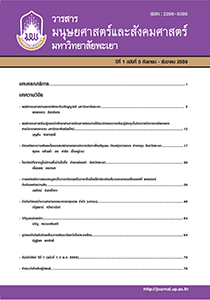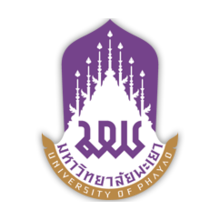รูปแบบปัจจัยตัวขับเคลื่อนการพัฒนาจังหวัดในประเทศไทย
Keywords:
รูปแบบปัจจัยการขับเคลื่อน, การพัฒนาจังหวัด, Patterns of driving factors, Contributing developmentAbstract
การศึกษาวิจัยครั้งนี้สรุปได้ว่า รูปแบบกลางของปัจจัยขับเคลื่อนการพัฒนาจังหวัด ณ ระดับนัยสำคัญสำคัญ 0.05 ประกอบไปด้วย องค์ประกอบที่สำคัญ 1) ปัจจัยขับเคลื่อนที่มีความสัมพันธ์ทางตรง ประกอบไปด้วย 4 ปัจจัยขับเคลื่อน ได้แก่ ทุนด้านการเงิน (47.6%) ทุนด้านบุคลากร (28.6%) การบริการที่ผลิตเพื่อการพาณิชย์ (2.5%) และรัฐสวัสดิการ (2.3%) 2) ปัจจัยขับเคลื่อนควบคุม และมีความสัมพันธ์ทางอ้อม ประกอบไปด้วย 3 ปัจจัยขับเคลื่อน ได้แก่ การสวัสดิการสังคมที่ปราศจากรัฐสวัสดิการ (7.4%) ตัวสินค้าที่ผลิตเพื่อใช้และขาย (0.8%) ทุนด้านวัสดุอุปกรณ์ (0.1%) 3) รูปแบบภาคีการพัฒนาและกระบวนการ (10.9%) 4) ตัวแปรตาม ดัชนีรายได้ต่อคนต่อปีของประชากร มีที่มาจากการรวมกันของข้อมูลจาก 3 ส่วน และแต่ละส่วน มีสัดส่วนการนำไปใช้จริงคือ รายได้ต่อคนต่อปีของประชากร (-0.766) สัมประสิทธิ์ความไม่เสมอภาค (0.821) และเส้นแห่งความยากจนหรือประชาชนมีการประกอบอาชีพ และมีรายได้พอเพียง (0.675) ส่วนการแบ่งกลุ่มจังหวัดใหม่เพื่อผ่านการวิเคราะห์ไปสู่การค้นหารูปแบบเฉพาะของปัจจัยการพัฒนาในแต่ละจังหวัดนั้น พบกลุ่มจังหวัดใหม่ แบ่งได้เป็น 4 กลุ่ม คือ กลุ่มจังหวัดหลัก (กลุ่มจังหวัดที่เป็นศูนย์ปฏิบัติการกลุ่มจังหวัด) จำนวน 18 จังหวัด กลุ่มจังหวัดรอง (กลุ่มจังหวัดย่อยที่เป็นส่วนหนึ่งของกลุ่มจังหวัด ไม่เป็นจังหวัดที่เป็นศูนย์ปฏิบัติการกลุ่มจังหวัด) จำนวน 33 จังหวัด กลุ่มจังหวัดชายแดน (ไม่รวมกลุ่มจังหวัดหลัก) จำนวน 24 จังหวัด และกลุ่มศูนย์กลางการพัฒนา มีเพียงกรุงเทพมหานคร จังหวัดเดียวเท่านั้น
Patterns of Driving Factors Contributing to Provincial Development in Thailand
Attatipon Pronsit
Department of Administrative Development Program, North-Chiang Mai University
The summary of hypothesis testing are the model driven development of the province in a significant level 0.05 there are important elements 1) Driven with direct relationshipsinclude 4 factors are financial capital (47.6%), human capital (28.6%), services to commercial production (2.5%) and commonwealth (2.3%) 2) Driven control and indirect relationships among the 3 factors are the social welfare without commonwealth (7.4%) the products manufactured for use and sale (0.8%) Materials and capital equipment (0.1%) 3) The party model development and process (10.9%) 4) The variable index income per capita of the population are derived from a combination of data from 3 section and each segment is proportional to its actual use are income per capita of the population (-0.766) coefficient of inequality (0.821) and the poverty line or people have to work and earn enough (0.675) and segmentation the new province through analysis to search for a specific pattern of individual factors in the development of the province found the new provinces divided into 4 groups are main clusters (Clusters are operations center) 18 provinces, second clusters (Minor clusters are one part of clusters not operations center) 33 provinces, border clusters (Without main clusters) 24 provinces and development center clusters just only Bangkok.
Downloads
How to Cite
Issue
Section
License
ผู้นิพนธ์ต้องรับผิดชอบข้อความในบทนิพนธ์ของตน มหาวิทยาลัยพะเยาไม่จำเป็นต้องเห็นด้วยกับบทความที่ตีพิมพ์เสมอไป ผู้สนใจสามารถคัดลอก และนำไปใช้ได้ แต่จะต้องขออนุมัติเจ้าของ และได้รับการอนุมัติเป็นลายลักษณ์อักษรก่อน พร้อมกับมีการอ้างอิงและกล่าวคำขอบคุณให้ถูกต้องด้วย
The authors are themselves responsible for their contents. Signed articles may not always reflect the opinion of University of Phayao. The articles can be reproduced and reprinted, provided that permission is given by the authors and acknowledgement must be given.








